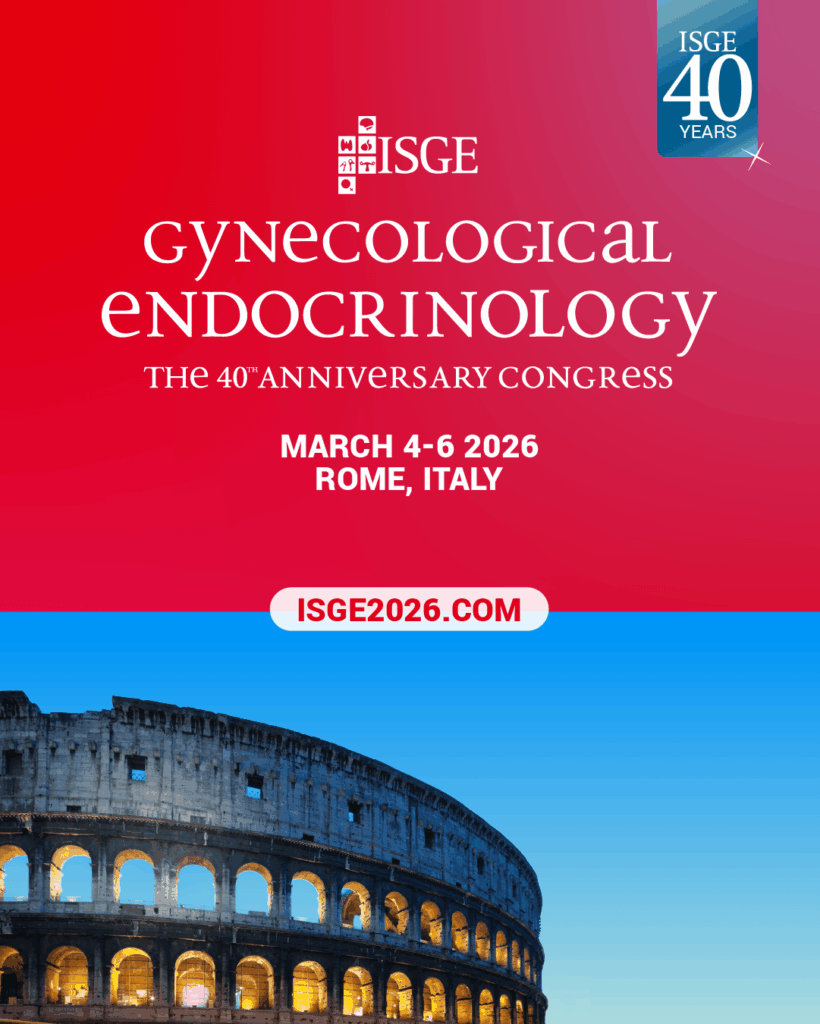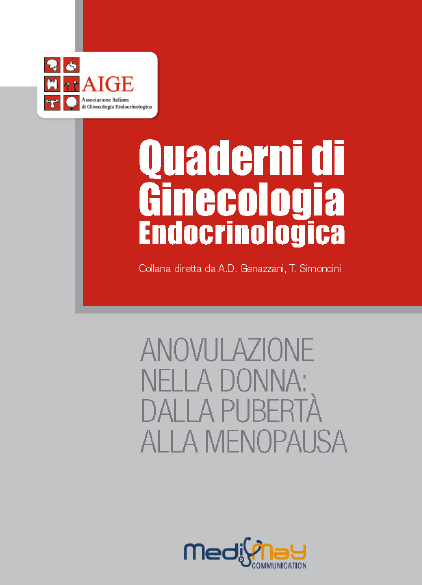-
Marcus May , Christoph Schindler, Stefan Engeli
Modern pharmacological treatment of obese patientsTher Adv Endocrinol Metab 2020, Vol. 11: 1–19
DownloadAbstract
There are many angles to consider in drug treatment of obese patients. On the one hand, some specific weight loss drugs are available, on the other, several drugs are associated with unintentional weight changes. When treating an obese patient for any given disease, several physiological changes may influence the pharmacokinetic properties of the drugs required. Thus, increased body weight may influence the efficacy and safety of some drug treatments. Even more complicated is the situation after weight reduction surgery. Due to the various changes to the gastrointestinal tract induced by the different surgical techniques used, and the dynamic changes in body composition thereafter, drug dosing has to be constantly reconsidered. Whereas all of these issues are of clinical importance, none of them have been investigated in the necessary depth and broadness to ensure safe and efficacious drug treatment of the massively obese patient. Individual considerations have to be based on comorbidities, concomitant medication, and on specific drug properties, for example, lipophilicity, volume of distribution, and metabolism. In this article we summarize the data available on different aspects of drug treatment in the obese patient with the hope of improving patient care.
-
–
Statement della SIE (Soc Int Endocrinology) sulle patologie endocrine e Coronavirus (Covid 19)Horm Metab Res 2020; 52: 85–88
DownloadAbstract
Lo statement (in inglese) da le indicazioni specifiche su come gestire la eventuale occorrenza della positività oe/o malattie da Covid 19 in pazienti con patologie endocrine
-
Ana Filipa Rodrigues Ferreira, Ana Paula Sousa, Mariana Moura-Ramos, Paulo Cortesão, Ana Luísa Costa, Teresa Almeida-Santos
Adverse effect of higher waist circumference in assisted reproductive technology outcomesEuropean Gynecology and Obstetrics. 2020; 2(1):36-41
DownloadAbstract
Background and purpose: Studies on the influence of obesity on the outcomes of treatment with assisted reproductive technologies (ART) are contradictory, although most have demonstrated a negative impact. The contribution of abdominal obesity, an effective marker of dysfunctional adipose tissue, has been poorly investigated. Methods: Observational cohort study. All women (N=578) who underwent ART treatment at the fertility centre of a Portuguese University Hospital during the study period were included. The women’s body mass index (BMI) and waist circumference (WC) were evaluated at the beginning of the stimulation cycle. They underwent controlled ovarian hyperstimulation with long agonist or short antagonist/agonist protocols. Data were stratified in two groups, according to the women’s WC-based metabolic risk (defined according to Portuguese national guidelines): lower metabolic risk (WC < 88 cm) and higher metabolic risk (WC ≥ 88 cm). Results: The women with a WC < 88 cm had a higher number of oocytes collected (≈ 8% more, p=0.049), a higher number of mature oocytes (≈ 20% more, p=0.010), a higher number of fertilized oocytes (≈ 28 more, p=0.017) and a lower gonadotropin requirement (≈ 10% less, p=0.042) than the women with a WC ≥ 88 cm. The chance of fertilization occurring was two times higher in women with a WC < 88 cm (OR [95% CI]:2.04 [1.04-4.00]). No significant associations were observed between WC group and pregnancy, live birth, cycle cancellation and miscarriage rates. Conclusions: Women with a higher WC have poorer ART treatment outcomes, namely a lower number of oocytes collected, a lower number of mature oocytes, and a lower number of fertilized oocytes. This study highlights the importance of considering fat distribution in the quest to clarify the impact of obesity on ART treatment outcomes. According to our results, women with a WC ≥ 88 cm have poorer outcomes. It would be important to consider women’s fat distribution when counseling and predicting ART treatment outcomes, particularly in terms of ovarian stimulation and oocyte quality.
-
Glenn E. Palomaki, Bhanu Kalra, Tanya Kumar, Amita S. Patel, Gopal Savjani, Laura C. Torchen, Andrea Dunaif, Anthony Morrison, Geralyn M. Lambert-Messerlian, Ajay Kumar
Adjusting antimüllerian hormone levels for age and body mass index improves detection of polycystic ovary syndromeFertil Steril 2020, 113: 876-884Abstract
Objective To examine whether accounting for a woman’s age and body mass index (BMI) would improve the ability of antimüllerian hormone (AMH) to distinguish between women with (cases) and without (controls) polycystic ovarian syndrome (PCOS).
Design An opportunistic case-control dataset of reproductive age women having evaluations for PCOS as defined by National Institutes of Health criteria.
Setting Two medical centers in the United States enrolled women. Serum samples were analyzed for relevant analytes.
Patients Women were between 18 and 39 years of age when samples and clinical information were collected. Residual samples had been stored for 2−17 years. AMH was measured via immunoassay.
Interventions None; this was an observational study.
Main outcome measures Detection and false-positive rates for PCOS were computed for AMH results expressed as multiples of the median (MoM) both before and after adjustment for the woman’s age and BMI.
Results Using unadjusted AMH MoM results, 168 cases (78%) cases were at or beyond the 90th centile of controls (2.47 MoM). After accounting for each woman’s age and BMI, 188 (87%) of those women were beyond the 90th centile of controls (2.20 MoM), a significant increase (P = .015). The adjusted AMH MoM levels fitted logarithmic normal distributions well (mean, standard deviation for controls and cases of 0.0000, 0.2765 and 0.6884, 0.2874, respectively) and this allowed for computation of patient-specific PCOS risks.
Conclusions Accounting for the woman’s age and BMI resulted in significantly higher AMH-based detection rates for PCOS at a 10% false-positive rate, and patient-specific PCOS risks could be computed. -
Faustino R. Pérez-López, Ricardo Savirón-Cornudella, Peter Chedraui, Andrea R. Genazzani
GYNECOLOGICAL ENDOCRINOLOGY 2020, 36: 277–278
DownloadAbstract
Considerations on the actual pandemia that can affect pregnant women
-
Blazej Meczekalski, Gonzalo R. Pérez-Roncero, María T. López-Baena, Peter Chedraui, Faustino R. Pérez-López
The polycystic ovary syndrome and gynecological cancer riskGYNECOLOGICAL ENDOCRINOLOGY 2020, 36: 289-293Abstract
This review updates the knowledge regarding the association between the polycystic ovary syndrome (PCOS) and the risk of gynecological cancer. We performed a literature review of clinical and epidemiological studies concerning PCOS and the risk of breast, endometrial and ovarian cancer after selecting information by quality of scientific methodology. It was found that evidence does not support a link between PCOS and breast cancer risk. There is an increased risk of endometrial cancer, while data concerning ovarian cancer are contradictory. Regarding PCOS and its association to cervical, fallopian tube, and vulvar cancer, the quality of evidence is heterogeneous. In conclusion, women with PCOS should be screened for endometrial cancer and more research is warranted to determine in this population the true risk of developing other gynecological cancers such as breast and ovarian.
-
Andrea Giannini, Amaury Trujillo , Claudia Buzzi , Mirko Duradoni , Cesare Zavattari , Alessandro Tommasi , Elena Tamburini , Pasquale Cingolani , Sandro Scattareggia , Tommaso Simoncini
Rationale and development of the Vita Nova project: and app and service to reduce cardiovascular and metabolic risks in pre-menopausal and menopausal womenEuropean Gynecology and Obstetrics. 2020; 2(1):62-67
DownloadAbstract
Background and purpose: Despite the recent increase in research and development of mobile self-care tools, there is still a marked lack of solutions focusing on prevention of the negative health effects of the menopause. Moreover, most of the solutions that do exist are not based on well-founded user models, such as personas, and fail to exploit the potential of persuasive mobile technology, and thus result in a user experience that is neither engaging nor adaptive.
Methods: We describe how we designed personas during the development of a mobile application for menopause selfcare. We applied the principles of the Persuasive Systems Design model and the Just-in-Time Adaptive Interventions framework, together with participatory techniques and demographic data analysis.
Results: The Vita Nova App prototype has been successfully completed. The usability of this mobile app and service, designed to accompany and coach women regarding the menopause, automatically adapting to their wants and needs in order to induce positive health-related behavioural changes, is currently being verified through a pilot study in a “real-life” scenario of a small group of healthy peri-menopausal and early- and late- postmenopausal women. This preliminary investigation is now in its final stages.
Conclusions: This approach allowed us to come up with reliable representations of our target users and their goals, which in turn enables us to better define and communicate our project’s scope and features. Moreover, this approach is not limited to the menopause domain. In the future, it could also be used, to reliably represent users, when designing mobile self-care solutions in other health-related domains or scenarios of female life. Further investigations in larger study populations of healthy peri- and post-menopausal women will be mandatory in order to assess the real impact of this app -
Jin Ju Kim, Kyu Ri Hwang, Soo Jin Chae, Sang Ho Yoon, Young Min Choi
Impact of the newly recommended antral follicle count cutoff for polycystic ovary in adult women with polycystic ovary syndromeHuman Reproduction 2020, 35: 652–659Abstract
STUDY QUESTION What is the impact of the newly recommended antral follicle count (AFC) cutoff for polycystic ovary (PCO) on the diagnostic status of polycystic ovary syndrome (PCOS)?
SUMMARY ANSWER Among patients with phenotypes requiring the presence of PCO for diagnosis, approximately half (48.2%) were excluded from having PCOS based on the new AFC cutoff, although these excluded women had worse metabolic and hormonal profiles than the controls and were indistinguishable from the remaining patients with regard to major hormonal and metabolic parameters.
WHAT IS KNOWN ALREADY In the Rotterdam criteria, PCO is defined as either 12 or more follicles measuring 2–9 mm in diameter or an increased ovarian volume >10 cm3. Recently, an international PCOS guideline development group recommended an AFC threshold for PCO of ≥20 in adult women when using transducers with a high-resolution frequency, including 8 MHz.
STUDY DESIGN, SIZE, DURATION The current study used a case control design.
PARTICIPANTS/MATERIALS, SETTING, METHODS PCOS was diagnosed according to the Rotterdam criteria. Ultrasonography examinations were conducted with wide band frequency (5–9 MHz) transvaginal transducers and the centre frequency was 8 MHz. In patients who show both irregular menstruation and hyperandrogenism (HA), a diagnosis of PCOS can be made irrespective of the ovarian criteria change. Patients who were diagnosed according to HA and PCO (n = 86) or irregular menstruation and PCO (n = 443) were initially included among a total of 1390 adult women with PCOS (aged 20–40 years). Regardless of the AFC, if the ovarian volume is ≥10 cm3, a diagnosis of PCO can still be made. Thus, only patients who had an ovarian volume of <10 cm3 were analysed. Subjects who had an AFC of 12–19 and an ovarian volume <10 cm3 were designated as the ‘low AFC group’ (n = 255) and were the main focus of the study because they were excluded from having PCOS based on the new cutoff. Subjects with an AFC ≥20 and an ovarian volume <10 cm3 were designated as the ‘high AFC group’ (n = 101). A total of 562 premenopausal women without PCOS were enrolled as controls.
MAIN RESULTS AND THE ROLE OF CHANCE Among patients with irregular menstruation and PCO or HA and PCO phenotypes, approximately half (48.2%, 255/529) were excluded from having PCOS, which corresponded to one-fifth (18.3%, 255/1390) of the total adult patients. However, compared to the control group, these excluded women had worse metabolic profiles and were more androgenised. Notably, they were indistinguishable from the ‘high AFC group’ with regard to major hormonal and metabolic parameters (BMI and diabetic classification status, and the prevalence of insulin resistance, metabolic syndrome and HA).
LIMITATIONS, REASONS FOR CAUTION We cannot exclude the possibility of inter- and intraobserver variation in the evaluation of AFC.
WIDER IMPLICATIONS OF THE FINDINGS With the newly recommended follicle count cutoff, a substantial proportion of women with PCOS might be classified as not having PCOS despite visiting a hospital due to irregular menstruation or hyperandrogenic symptoms. A practical approach to them would involve controlling the menstrual or hyperandrogenic symptoms in hand and regularly evaluating them regarding newly developed or worsening PCOS-related symptoms or metabolic abnormalities. -
Gabriela P Mena, Gregore I Mielke, Wendy J Brown
Do physical activity, sitting time and body mass index affect fertility over a 15-year period in women? Data from a large population-based cohort studyHuman Reproduction 2020, 35: 676–683Abstract
STUDY QUESTION Do physical activity (PA), sitting time (ST) and body mass index (BMI) affect fertility over a 15-year period in Australian women?
SUMMARY ANSWER Moderate and high levels of PA confer advantages for fertility in women with normal BMI, but increased risk of infertility was observed in obese women.
WHAT IS KNOWN ALREADY Higher BMI is positively associated with higher rates of problems with fertility, but the effects of physical activity and sitting time on fertility are less well understood.
STUDY DESIGN, SIZE, DURATION Participants in The Australian Longitudinal Study of Women’s Health (ALSWH) completed mailed surveys in 2000, with follow-ups in 2003, 2006, 2009, 2012 and 2015 (N = 6130).
PARTICIPANTS/MATERIALS, SETTING, METHODS Participants were aged 22 to 27 in 2000. They were asked to report their physical activity levels, sitting time and fertility problems in each survey from 2000 to 2015. BMI was calculated from self-reported weight and height. Cumulative incidence of fertility problems was calculated from 2000 to 2015 and hazard ratios (HR) and 95% CIs were calculated using survival analysis.
MAIN RESULTS AND THE ROLE OF CHANCE From 2000 to 2015, the cumulative incidence of fertility problems was 15.4% (95% CI: 14.5–16.4). High levels of PA were associated with reduced risk of problems with fertility [HR 0.82 (95% CI: 0.69–0.98)], and higher BMI was positively associated with fertility problems [overweight: HR 1.18, (95% CI 0.99–1.39); obese: HR 1.36, (95% CI 1.14–1.63)]. In survival analyses, incidence rates were highest in every survey interval in women who reported low PA levels and in women who were obese. Overall, ST was not associated with fertility problems. In stratified models, high levels of PA attenuated the risk of problems with fertility in women who were in the normal BMI category [HR 0.64, (95% CI 0.49–0.82)].
LIMITATIONS, REASONS FOR CAUTION The ALSWH relies on self-reported data, which may be subject to recall bias.
WIDER IMPLICATIONS OF THE FINDINGS The study provides estimates of problems with fertility in a cohort of young adult Australian women, and the results indicate that these are inversely associated with physical activity levels and positively associated with BMI. However, the high infertility risk in obese women was not attenuated by high levels of PA. The protective effects of PA were only observed in women with normal BMI. As rates of developing problems with fertility were highest in every survey interval among women who reported low levels of physical activity and in women who were obese, these findings suggest that improving physical activity levels could be an affordable strategy to reduce problems with fertility in women who are trying to conceive. These findings should be considered by clinical and public health practitioners. -
Matthias Blüher
Metabolically Healthy ObesityEndocrine Reviews, Volume 41, 3, June 2020.
DownloadAbstract
Obesity contributes to reduced life expectancy, impaired quality of life, and disabilities, mainly in those individuals who develop cardiovascular diseases, type 2 diabetes, osteoarthritis, and cancer. However, there is a large variation in the individual risk to developing obesity-associated comorbid diseases that cannot simply be explained by the extent of adiposity. Observations that a proportion of individuals with obesity have a significantly lower risk for cardiometabolic abnormalities led to the concept of metabolically healthy obesity (MHO). Although there is no clear definition, normal glucose and lipid metabolism parameters—in addition to the absence of hypertension—usually serve as criteria to diagnose MHO. Biological mechanisms underlying MHO lower amounts of ectopic fat (visceral and liver), and higher leg fat deposition, expandability of subcutaneous adipose tissue, preserved insulin sensitivity, and beta-cell function as well as better cardiorespiratory fitness compared to unhealthy obesity. Whereas the absence of metabolic abnormalities may reduce the risk of type 2 diabetes and cardiovascular diseases in metabolically healthy individuals compared to unhealthy individuals with obesity, it is still higher in comparison with healthy lean individuals. In addition, MHO seems to be a transient phenotype further justifying therapeutic weight loss attempts—even in this subgroup—which might not benefit from reducing body weight to the same extent as patients with unhealthy obesity. Metabolically healthy obesity represents a model to study mechanisms linking obesity to cardiometabolic complications. Metabolically healthy obesity should not be considered a safe condition, which does not require obesity treatment, but may guide decision-making for a personalized and risk-stratified obesity treatment
Abstracts selezionati
-
Marcus May , Christoph Schindler, Stefan Engeli
Modern pharmacological treatment of obese patientsTher Adv Endocrinol Metab 2020, Vol. 11: 1–19
Download -
–
Statement della SIE (Soc Int Endocrinology) sulle patologie endocrine e Coronavirus (Covid 19)Horm Metab Res 2020; 52: 85–88
Download -
Ana Filipa Rodrigues Ferreira, Ana Paula Sousa, Mariana Moura-Ramos, Paulo Cortesão, Ana Luísa Costa, Teresa Almeida-Santos
Adverse effect of higher waist circumference in assisted reproductive technology outcomesEuropean Gynecology and Obstetrics. 2020; 2(1):36-41
Download -
Glenn E. Palomaki, Bhanu Kalra, Tanya Kumar, Amita S. Patel, Gopal Savjani, Laura C. Torchen, Andrea Dunaif, Anthony Morrison, Geralyn M. Lambert-Messerlian, Ajay Kumar
Adjusting antimüllerian hormone levels for age and body mass index improves detection of polycystic ovary syndromeFertil Steril 2020, 113: 876-884 -
Faustino R. Pérez-López, Ricardo Savirón-Cornudella, Peter Chedraui, Andrea R. Genazzani
GYNECOLOGICAL ENDOCRINOLOGY 2020, 36: 277–278
Download -
Blazej Meczekalski, Gonzalo R. Pérez-Roncero, María T. López-Baena, Peter Chedraui, Faustino R. Pérez-López
The polycystic ovary syndrome and gynecological cancer riskGYNECOLOGICAL ENDOCRINOLOGY 2020, 36: 289-293 -
Andrea Giannini, Amaury Trujillo , Claudia Buzzi , Mirko Duradoni , Cesare Zavattari , Alessandro Tommasi , Elena Tamburini , Pasquale Cingolani , Sandro Scattareggia , Tommaso Simoncini
Rationale and development of the Vita Nova project: and app and service to reduce cardiovascular and metabolic risks in pre-menopausal and menopausal womenEuropean Gynecology and Obstetrics. 2020; 2(1):62-67
Download -
Jin Ju Kim, Kyu Ri Hwang, Soo Jin Chae, Sang Ho Yoon, Young Min Choi
Impact of the newly recommended antral follicle count cutoff for polycystic ovary in adult women with polycystic ovary syndromeHuman Reproduction 2020, 35: 652–659 -
Gabriela P Mena, Gregore I Mielke, Wendy J Brown
Do physical activity, sitting time and body mass index affect fertility over a 15-year period in women? Data from a large population-based cohort studyHuman Reproduction 2020, 35: 676–683 -
Matthias Blüher
Metabolically Healthy ObesityEndocrine Reviews, Volume 41, 3, June 2020.
Download






